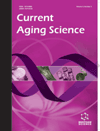
Full text loading...
We use cookies to track usage and preferences.I Understand

Alzheimer's disease is a progressive neurodegenerative disorder with no known treatment. Recent advances in regenerative medicine, including stem cell therapies, hold promise for treating Alzheimer's disease and slowing its progression. This review explores the various types of stem cells, such as neural and mesenchymal stem cells, and how they can be harnessed for Alzheimer's treatment. It also discusses the potential mechanisms of action, including neurogenesis, anti-inflammatory and anti-apoptotic effects, and the secretion of various biologically active molecules by stem cells.

Article metrics loading...

Full text loading...
References


Data & Media loading...